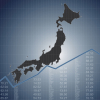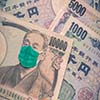Insights
Latin America: Supplier to a commodity-hungry world
Inflation is on everyone’s mind. From central bankers to bakers, it is one of the biggest topics of discussion. The prices of many commodities are rising sharply. The reasons vary. Supply constraints, sharp rise in demand or bad weather—take your pick.
Multi-asset Monthly - September 2021
As we contemplate a post-pandemic world, it is becoming more likely that things will not return to “normal” as we once knew it. While vaccines have been highly successful in preventing serious illness in those who are still contracting the virus, the Delta variant of COVID-19 is also proving to be harder to contain.
Asian Fixed Income Monthly - August 2021
US Treasury (UST) yields rose in August, prompted by data showing stronger-than-expected US employment growth. The rise in rates was supported by hawkish comments from some US Federal Reserve (Fed) officials.
Staying adaptive to an evolving recovery
The world is settling into a new normal that is likely to look quite different from pre-COVID-19 norms. This includes different patterns of demand shaped by learning to live with the virus and an ongoing fiscal thrust with firm policy objectives.
Asian Equity Monthly - August 2021
Asian stocks gained in August. While concerns about the spread of the Delta variant weighed on markets at the beginning of the month, the US Federal Reserve (Fed)’s dovish commentary and a rebound in the battered Chinese technology (tech) sector lifted sentiment towards the month-end
Japan Equity Monthly - August 2021
The news of Prime Minister Suga’s impending resignation triggered a rally in Japanese equities this week, with the market hoping that a new administration will bring the COVID-19 outbreak under control and hasten the normalisation of the economy. We explain what the market expects from the new administration and assess the implications of Japan’s upcoming general election.
Japan Value Insights
Japan’s drive to embrace hydrogen as an alternative energy source is an opportunity to identify hidden value in firms that are willing to tackle and resolve social issues.
Japan’s “Show Me the Money” Corporate Governance: 2Q Positive Profit Surprise
The just released 2Q CY21 data on aggregate corporate profits in Japan was surprisingly positive, as the overall corporate recurring pre-tax profit margin surged relatively near its record high in the 3Q CY18.
Japan’s structural reform to benefit investors
The three Japan-related news topics that have overwhelmingly dominated the attention of Western media so far this year are COVID-19 (by far), the Tokyo Olympics and the showdown at Toshiba.
Future Quality Insights - August 2021
The Tokyo summer Olympics have been a welcome distraction over the last few weeks and well done to Japan for hosting the games so successfully in the current environment. In particular it is inspiring to see the years of preparation and planning being showcased by the top competitors in their respective sports.
Asian Equity Monthly - July 2021
Asian stocks suffered losses in July, weighed down by the selloff in Chinese equities following Beijing’s regulatory crackdown on the private tutoring and technology-related sectors.
Multi-asset Monthly - August 2021
Cross-asset pricing has recently been challenging our reflationary outlook. When we first discussed the prospects for reflation about a year ago, we identified a number of key factors.
Asian Fixed Income Monthly - July 2021
The US Treasury (UST) curve bull flattened in July. The Federal Open Market Committee (FOMC) meeting was largely uneventful, although the forward guidance on asset purchases was tweaked slightly to indicate that progress had been made towards the Committee’s goals although still shy of the “substantial further progress” needed for the start of tapering.
Global Equity Quarterly Q2 2021
Our philosophy is centred on the search for “Future Quality” in a company. Future Quality companies are those that we believe will attain and sustain high returns on investment. ESG considerations are integral to Future Quality investing as good companies make for good investment
Further improving Japan’s equity culture and wealth
Japan’s economy should boom after the Olympics burden passes. Its stock market will likely rebound sharply too, but one item that has limited Japan’s equity culture, and thus, its wealth, especially for wary pensioners, is overly conservative guidance by corporations for upcoming fiscal year earnings.
Asian Equity Monthly - June 2021
Asian stocks edged lower in June, partly weighed down by a recent spike in COVID-19 cases in the region. Lingering worries about rising inflation and fears of a faster-than-expected tapering of the US Federal Reserve’s quantitative easing programme also dampened sentiment.
Asian Fixed Income Monthly - June 2021
The US Treasury (UST) yield curve flattened in June, with short-dated bonds underperforming. The Federal Reserve’s (Fed) hawkish pivot caused the UST curve to flatten aggressively mid-month.
Japan Equity Monthly - June 2021
We discuss what global inflation could mean for Japan, with the country having struggled extensively with deflation; we also assess the BOJ‘s plan to boost funding for mitigating climate change and what that could mean in the longer run from a corporate governance perspective.
Navigating credit opportunities in a recovering world
The momentum gained by the global credit market in 2020 has continued into 2021 and we appear to be on track for another strong year of performance. Low government bond yields, ample liquidity and improving credit quality have supported a market that now trades with spreads at all-time lows in some pockets.
Dispelling negative notions about Japan amid its increasing importance
Japan’s stock market does not deserve many of the ages-old worries and criticisms. Indeed, while not every company or circumstance is perfect, its performance, though lower than that of the US, has steadily outperformed, in constant currency terms, its other main global market rival, Europe, since late 2012 when Shinzo Abe was elected to lead the LDP.
Out of the six scenarios presented, a solid majority of our committee agreed again on a positive scenario, in which the global economy matches the market consensus for very strong growth, while equities continue to rally.
The Fed raises concerns on inflation
After many years of trying to stimulate inflation, central banks are now facing inflation levels that are far exceeding recent trends. In May, eurozone inflation rose to 2% and in the US core inflation reached 3.8% (almost a 30-year high).
A new era for manager due diligence
The 2007-2008 global financial crisis had a lasting impact on public and private pension funds, as the collapse of Lehman Brothers and massive fraud committed by Wall Street money manager Bernie Madoff placed greater emphasis on fiduciary obligations and manager due diligence.
Reaping big rewards in Asian small caps
Grace Yan, a Senior Portfolio Manager and a member of the Nikko AM Asian Equity Team, talks about the underlying reasons behind her recent success in winning Citywire Asia’s Best Fund Manager award and her passion about uncovering hidden gems in the Asian small-cap equity arena.
Multi-asset Monthly - June 2021
Despite very bumpy economic data—particularly on inflation—rates have compressed, implying most of the “surprises” have already been priced in. This is positive for growth assets that respond better to yield curve stability than the sudden steepening that defined the first quarter.
Asian Equity Monthly - May 2021
Supported by optimism about the region’s ongoing economic recovery, Asian stocks delivered decent gains in May, shrugging off concerns about a spike in COVID-19 cases in several Asian countries and persistent worries about inflation.
Asian Fixed Income Monthly - May 2021
US Treasury (UST) yields traded in a relatively narrow range in May. Inflation fears resurfaced, prompted by rising commodity prices and a marked increase in headline consumer and producer price indices in the US.
Japan Equity Monthly - May 2021
We explain why corporate earnings in FY21 are expected to begin reflecting recovering confidence among Japanese companies as vaccine rollouts gain momentum. We also look into the BOJ’s trial run for a digital yen and the impact such a currency could have on the economy and markets.
Rising nationalism spurs Chinese consumers to go local
With the recent rise of nationalism in China, many foreign brands operating in the world’s second largest economy are now treading very carefully in their marketing campaigns and public communiqué.
Are rising yields a concern for Asian REITs?
We believe that Asian REITs will continue to perform well while the economic recovery in Asia and the rest of the world remains strong and as long as the rise in bond yields do not become excessive.
Future Quality Insights - June 2021
Who hasn’t sat at home, shouting at the TV as a contestant on a quiz show offers up a hopelessly wrong answer? Incredulity, frustration and a sense of helplessness are all common emotions in that situation. At least you normally get a good laugh at the end of it.
While the Japanese equity market managed to strongly rebound in 2020 after a sharp fall at the start of the pandemic, it has lagged its peers in 2021 amid the country’s struggle to contain COVID-19 and its slow rollout of vaccinations.
From success story to cautionary tale: Assessing Japan’s vaccination effort
Until recently, Japan was lauded as one of the few countries that successfully limited the COVID-19 outbreak. However, more than a year into the pandemic, Japan’s slow vaccine rollout is coming under increased scrutiny with the country lagging far behind its G7 peers in vaccinations.
Multi-asset Monthly - May 2021
The US Treasury (UST) market has been an important barometer of the reflation trade for markets this year. Most asset classes have performed in line with movements in UST yields as correlations, whether positive or negative, remain strong.
Asian Equity Monthly – April 2021
Asian stocks turned in decent gains in April on optimism about the region’s economic recovery, especially after China and several other Asian countries reported better-than-expected 1Q21 GDP growth. The MSCI AC Asia ex Japan Index gained 2.5% in US dollar (USD) terms over the month.
Net zero carbon: Is it all just hot air?
"Nowadays people know the price of everything and the value of nothing", quipped Oscar Wilde.
Japan Equity Monthly - April 2021
We gauge Japan’s slow vaccine rollout from an economic perspective and assess the shift in work styles that occurred during the pandemic and its potential impact on real estate prices.
The case for Asian small caps
Exhibiting an extensive track record of outperformance versus big caps and offering good diversification from traditional equities, we believe that Asian small-cap stocks provide numerous investment merits for long-term investors.
The striking 52% year-on-year surge in prices of second-hand US vehicles has, as expected, caught market attention, with global chip shortages often blamed for the disruption in the market for used cars. Behind the scenes, however, stands Joe Biden, the US incumbent president, whose first 100 days in the office was marked by several milestones, some of which could quite convincingly add more “meat” to the story.
Emerging market fixed income quarterly
Emerging Markets (EM) debt began 2021 by consolidating after an exceptional performance at the end of 2020. The negative performance was mostly driven by a widening of US Treasury yields while spreads remained broadly unchanged.
Global Equity Quarterly Q1 2021
Our philosophy is centred on the search for “Future Quality” in a company. Future Quality companies are those that we believe will attain and sustain high returns on investment. ESG considerations are integral to Future Quality investing as good companies make for good investment.
Global credit quarterly
The global credit market saw a positive start into the year in Q12021 as spreads continued to tighten. However, total returns were negatively impacted by the global move toward higher rates. At the beginning of 2021, cyclical sectors came back to the forefront and outperformed. Energy and automotive sectors were among the winners, while utilities lagged the rally.
Multi-asset monthly - April 2021
As reflationary dynamics gain support from refreshed stimulus in the US and a largely successful vaccine rollout with returning growth already to show for it, the reflation trade appears a bit exhausted as measured by market action. However, we see the current dynamic more as a pause than a conclusion.
Asian Fixed Income Monthly - March 2021
The UST yield curve steepened further in March as stronger-than-expected domestic economic data prints, passage of the US dollar (USD) 1.9 trillion stimulus package and a ramp-up in the rate of US vaccinations amid slowing daily infection rates prompted investors to increasingly price in accelerating growth in the coming quarters.
Asian equity monthly – March 2021
Asian stocks succumbed to profit-taking in March as hopes over a vaccine-led regional economic recovery were overshadowed by persistent reflationary concerns and rising global bond yields. The MSCI AC Asia ex Japan Index fell by 2.5% in US dollar (USD) terms over the month.
Palm oil investing through an ESG lens
Does investing in palm oil companies pose a controversy or present an opportunity? Here is a deep-dive analysis of the palm oil sector and the material ESG issues facing it. All in all, we believe that positive ESG changes represent a strong opportunity for palm oil companies, and we look for candidates that strive towards sustainability goals and exceed their ESG targets.
Following a tumultuous 2020 marked by the COVID-19 pandemic, global growth in 2021 is expected to improve on the back of positive vaccine developments and continued government measures. However, the pace of recovery is likely to be uneven among economies and fears of a resurgence of COVID-19 linger. It would be presumptuous to say that we are finally out of the woods.
Japan Equity Monthly - March 2021
We provide our view on the Bank of Japan’s latest policy review, under which the central bank decided to allow long-term rates to fluctuate in a wider band and removed its annual target for ETF purchases. We also assess the barring of foreign spectators from the Olympic games.
Global Investment Committee Outlook: Continue risk-positive
A large majority of our members agreed on a positive scenario in which the global economy mildly outperforms market consensus, while equities continue to rally.
Japan equities poised for further gains along with a turnaround for value
In February 2021, Japan’s Nikkei Stock Average reached JPY 30,000 for the first time in over three decades. We believe that equities will keep rising, and that amid this shift in the broader market Japanese value stocks are on the cusp of a long-awaited turnaround.




















































